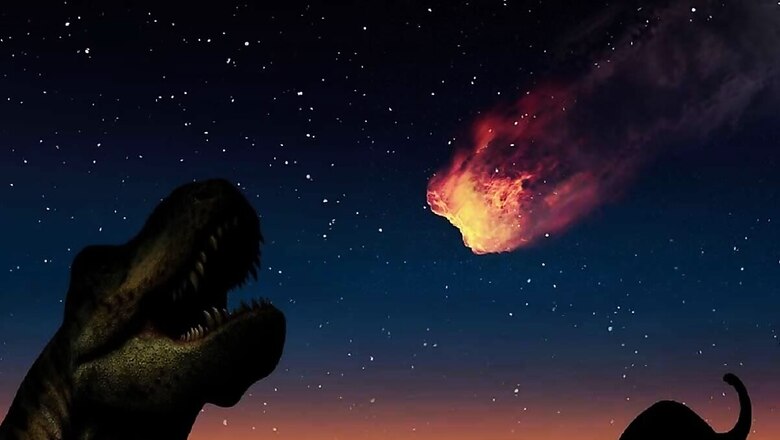
views
The most established theory around the extinction of dinosaurs says that a six-mile-long asteroid, struck the earth 66 million years ago, eradicating nearly 75 per cent of species including the dinosaurs. However, the recent discovery of an underwater crater off the coast of Guinea has made scientists conclude that the hitting of the massive asteroid was not an independent event. The study, published in Nature magazine revealed that another large asteroid struck Earth around the same time, potentially contributing to the conditions that led to the dinosaurs’ extinction.
3-D images of a second crater termed Nader made by an asteroid have been released by Heriot-Watt University in Scotland. The explosion created a crater over five and a half miles wide, according to the scans, although researchers suggest that the asteroid was around a quarter of a mile in size and travelled at something over 45,000mph when it hit Earth. Even though the size was smaller compared to the asteroid that caused the mass extinction, it may be responsible for creating a larger combined effect.
Dr Uisdean Nicholson, a marine geologist from the Heriot-Watt University first identified the Nadir Crater in 2022. It was not clear what specific effects these differentiations had at that time. Talking about the same, he said, “The new images paint a picture of the catastrophic event.”
The team of scientists, led by Dr Nicholson, is confident that the formation of a 9km depression resulted from an asteroid impact on the seabed. They do not know the precise time of this event, or whether it preceded or succeeded the asteroid which formed the 160 km Chicxulub crater in Mexico.
In a bid to know more about the impact, scientists adopted 3D seismic imaging to try and map the ring of this crater and various other geophysical impacts that are found 300 meters beneath the sea bed.
“There are around 20 confirmed marine craters worldwide, and none of them has been captured in anything close to this level of detail, It’s exquisite,” said Nicholson. Craters end by being eroded or deformed, and for this reason can be challenging to discover, especially since they are thousands of years old. The data given to Nicholson’s team by the global geophysical company TGS was enough to observe all features of the crater.
The collision seemed to spark strong earthquakes that created soft and saturated ground beneath the ocean floor and new faults emerged below the seabed, according to the study. It caused landslides and released a giant wave over 800 meters tall that would have propagated across the Atlantic Ocean.

















Comments
0 comment